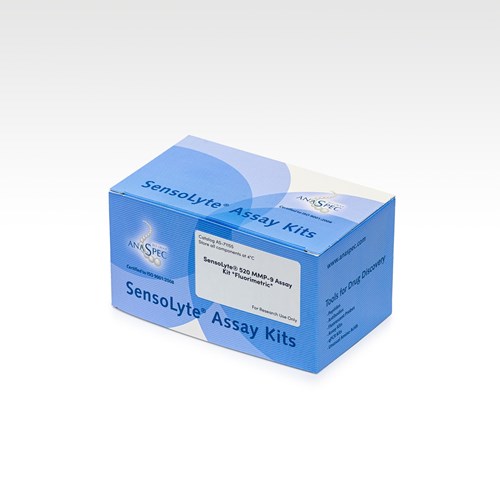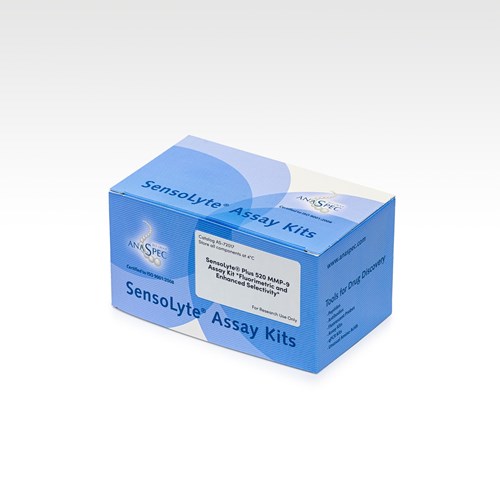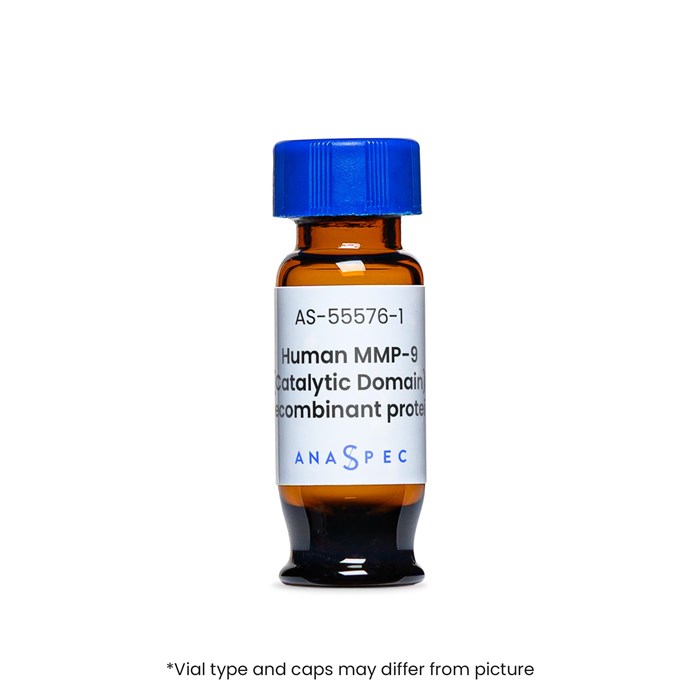MMP-9 (Catalytic Domain), human recombinant
- Cat.Number : AS-55576-1
- Manufacturer Ref. :
-
Availability :
In stock
- Shipping conditions : Ice fees will apply
Alternative choices
Matrix metalloproteinases (MMPs) belong to a family of secreted or membrane-associated zinc endopeptidases capable of digesting extracellular matrix components. MMP-9 (92-kDa gelatinase, collagenase-IV) is involved in a number of diseases such as cancer, angiogenesis, alopecia, and metastasis. MMP-9 is secreted as zymogen with prodomain, gelatin-binding domain consisting of three contiguous fibronectin type II units, catalytic domain, proline-rich linker region, and C-terminal hemopexin-like domain. It can degrade a variety of substrates, including gelatin, collagens type IV, V, XIV, a2-macroglobulin, elastin, vitronectin, and proteoglycans.
The sequence (Accession # NP_004985.2) corresponding to the catalytic domain (aa 112-445) of Human MMP-9 was expressed in E. coli. The recombinant human MMP-9 was purified from bacterial lysate and refolded using proprietary technique. The molecular weight of the recombinant Human MMP-9 Catalytic Domain is ~40 kDa.
Specifications
| Chemistry | |
| UniProt number |
|
|---|---|
| Molecular Mass/ Weight |
|
| Modification | |
| Conjugation |
|
| Quantity & Purity | |
| Concentration |
|
| Purification Method |
|
| Purity |
|
| Storage & stability | |
| Form |
|
| Storage Buffer |
|
| Storage Conditions |
|
| Activity | |
| Application | |
| Biomarker Target | |
| Specificity |
|
| Research Area | |
| Sub-category Research Area | |
| Usage |
|
| Source | |
| Host | |
| Source / Species |
|
Downloads
You may also be interested in the following product(s)


SensoLyte® Plus 520 MMP-9 Assay Kit Fluorimetric and Enhanced Selectivity - 1 kit
Citations
FoxO4 regulates TNF{alpha}-directed smooth muscle cell migration by activating matrix metalloproteinase 9 gene transcription.
Mol Cell Biol . 2007 Jan 22 ; 27(7) 2676 | DOI : 10.1128/MCB.01748-06.
- H. Li

